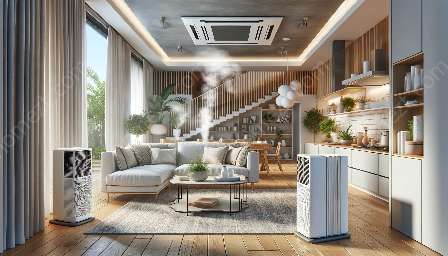As our understanding of the impact of indoor air quality on allergies and asthma continues to evolve, the future of home cleaning is set to undergo significant changes. This article explores the latest trends and innovative solutions for managing allergies and asthma through effective home cleaning techniques.
Understanding the Impact of Allergies and Asthma
Allergies and asthma are common respiratory conditions that can be triggered or exacerbated by various indoor allergens and pollutants. Dust mites, pet dander, mold, pollen, and other airborne particles can contribute to indoor air pollution, leading to discomfort and health complications for individuals with allergies and asthma.
Emerging Trends in Home Cleaning
1. Smart Cleaning Devices: The rise of smart home technology has led to the development of advanced cleaning devices equipped with sensors and automated features. These devices can target specific allergens and pollutants while minimizing exposure to harmful chemicals.
2. Green Cleaning Products: There is a growing demand for eco-friendly and non-toxic cleaning products that are safe for individuals with allergies and asthma. Future trends suggest an increase in the availability of natural and sustainable cleaning solutions.
3. HEPA Filtration Systems: High-efficiency particulate air (HEPA) filtration systems are becoming more common in home cleaning appliances, providing effective removal of airborne particles, including allergens and asthma triggers.
4. UV-C Disinfection: Ultraviolet-C (UV-C) technology is gaining traction as a method for disinfecting and eliminating microorganisms, including mold spores and bacteria, in household surfaces and air.
Advanced Techniques for Allergy and Asthma Management
Allergen-Proofing: Future home cleaning techniques will focus on allergen-proofing through the use of specialized barriers, encasements, and cleaning practices to reduce the presence of allergens in the indoor environment.
Air Purification: Innovative air purifiers with advanced filtration technologies will be increasingly integrated into home cleaning strategies to maintain clean and healthy indoor air.
Personalized Cleaning Plans: With the help of digital tools and smart devices, individuals will be able to create personalized cleaning plans tailored to their specific allergy and asthma triggers.
The Role of Technology and Innovation
Technology and innovation will play a pivotal role in shaping the future of home cleaning for allergies and asthma management. Advancements in artificial intelligence, robotics, and data analytics are expected to revolutionize cleaning practices, making them more efficient, precise, and tailored to individual needs.
- Robotic Cleaners: Robotic vacuum cleaners and mopping devices with AI capabilities will become more sophisticated, offering precise allergen removal and air quality monitoring.
- Data-Driven Insights: Home cleaning solutions will leverage data-driven insights to identify and target specific allergens, providing actionable recommendations for improved indoor air quality.
- Integration with Smart Home Systems: Future cleaning technologies will seamlessly integrate with smart home systems, allowing for automated, responsive, and interconnected cleaning experiences.
Conclusion
In conclusion, the future of home cleaning for allergies and asthma management holds promising advancements in technology, sustainable practices, and personalized solutions. As awareness of indoor air quality issues continues to grow, the evolving trends in home cleaning are set to enhance the overall well-being of individuals with allergies and asthma, creating healthier and safer indoor environments.


